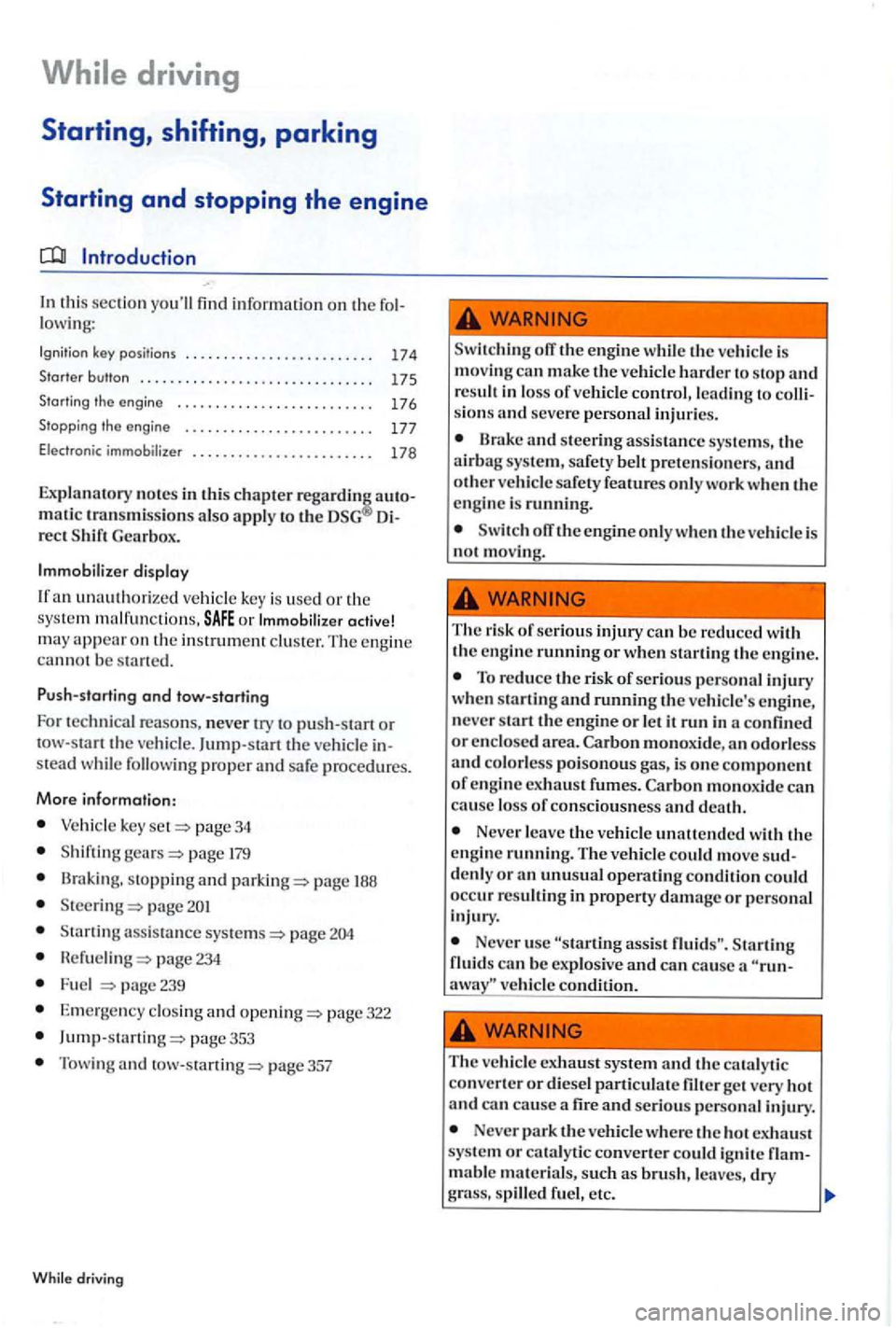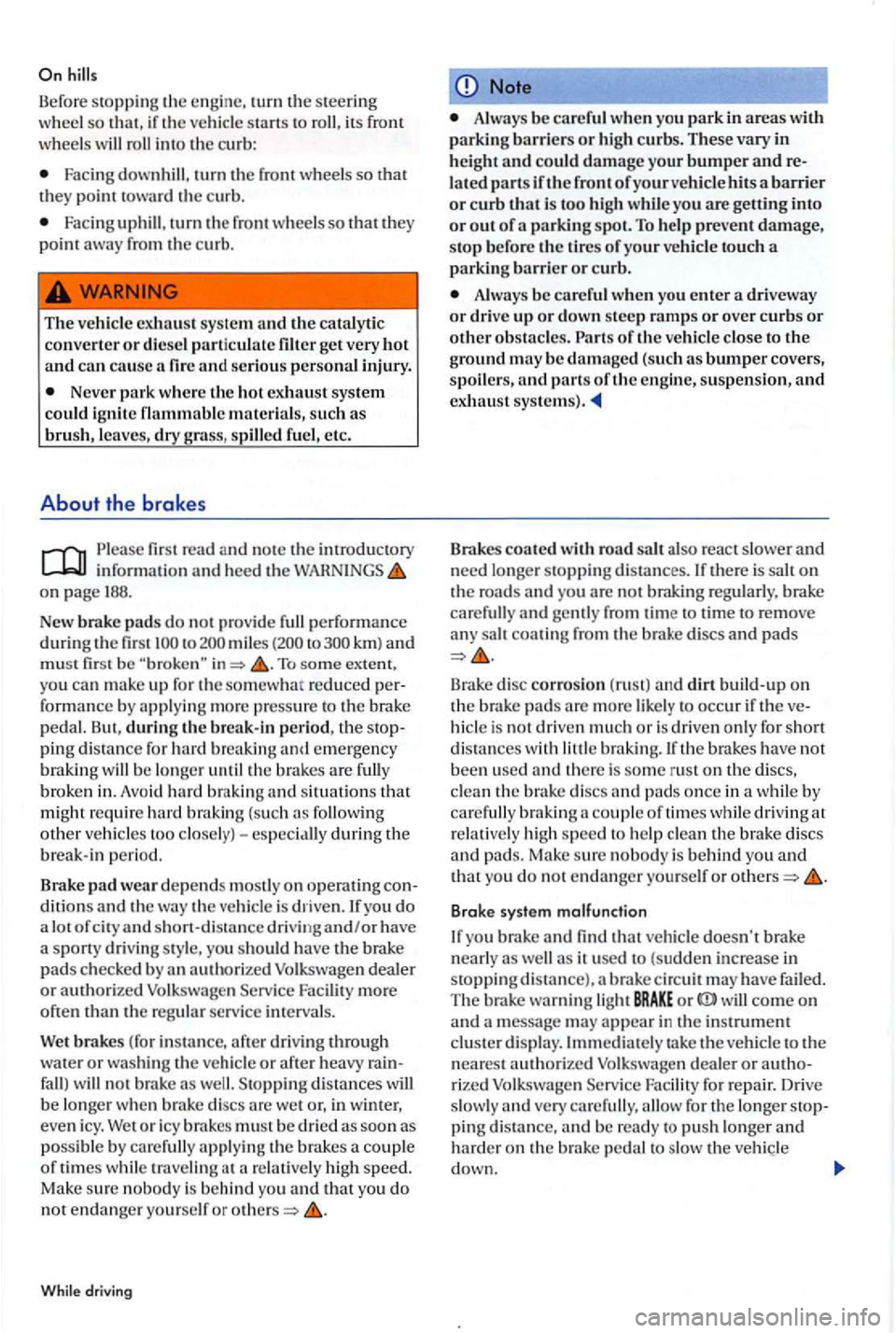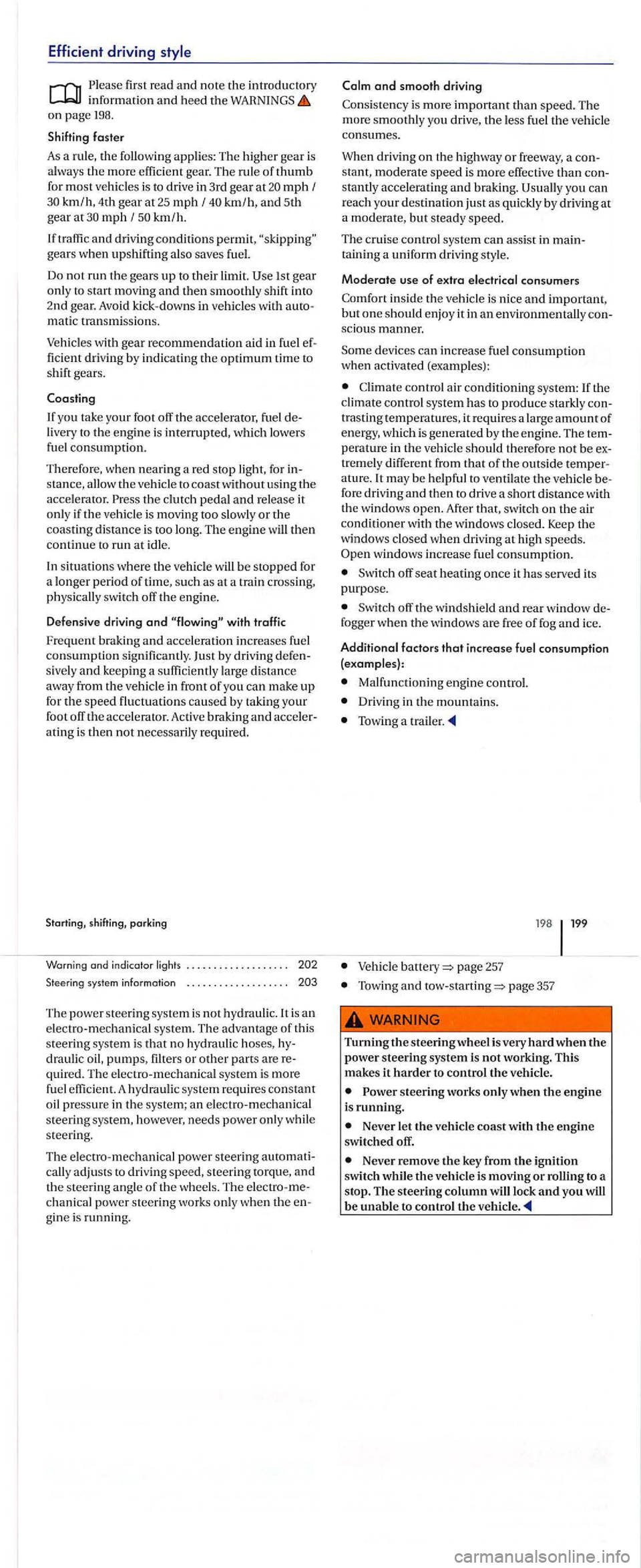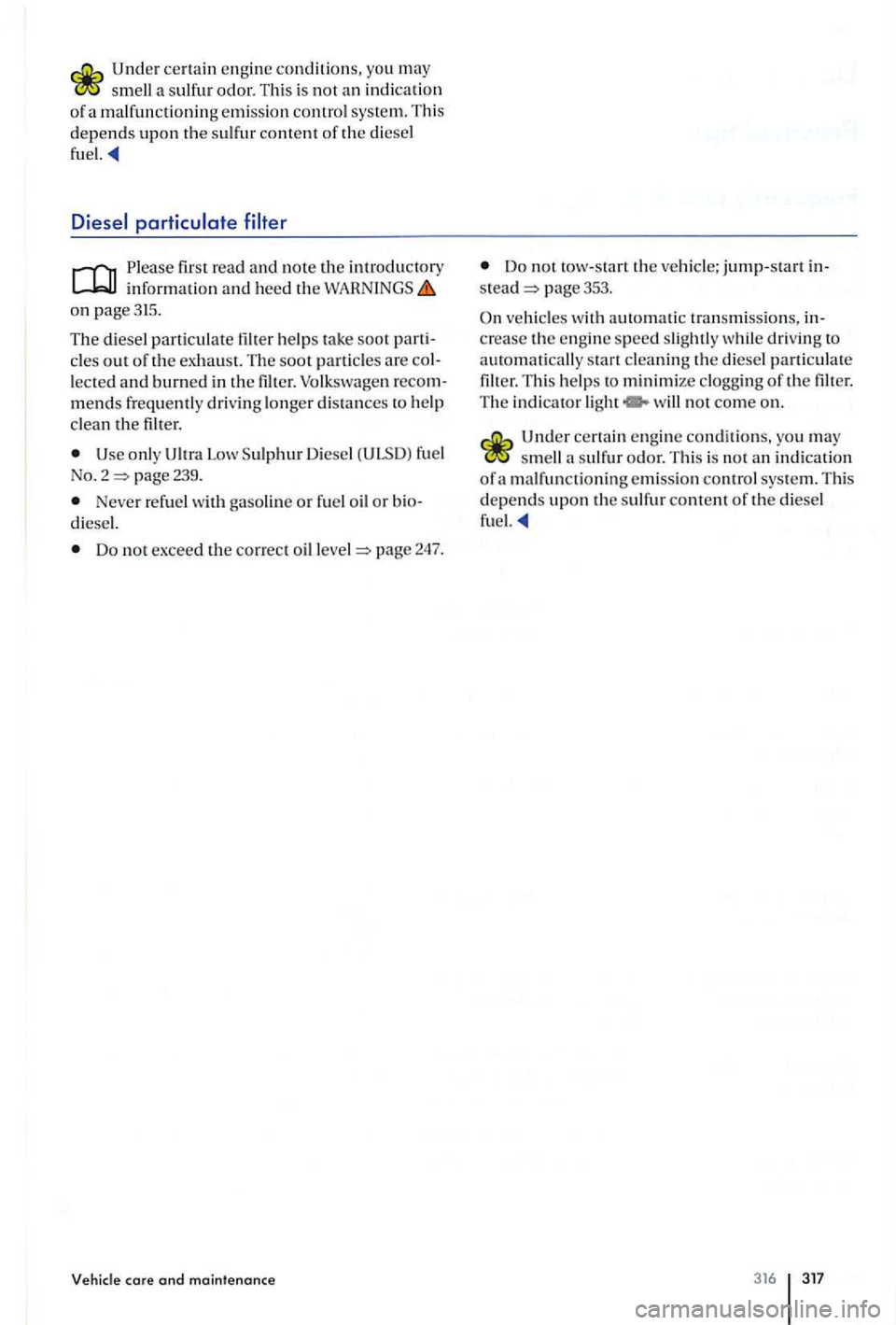2007 VOLKSWAGEN GOLF PLUS fuel filter
[x] Cancel search: fuel filterPage 173 of 541

In this section yo u'll fin d information on th e
ke y p ositions . . . . . . . . . . . . . . . . . . . . . . . . 17 4
Starter button . . . . . . . . . . . . . . . . . . . . . . . . . . . . . . 175
Sta rting the engine . . . . . . . . . . . . . . . . . . . . . . . . . 176
S topping th e e ngine . . . . . . . . . . . . . . . . . . . . . . . . . 177
Electro nic immobi lizer . . . . . . . . . . . . . . . . . . . . . . . . 178
Explanatory no tes in thi s chapter regard
rec t S hift Gea rbox.
Immob i
lizer display
I f a n unauthori z
ed vehicle ke y is used or the
s y s te m malf un ctions, o r Immobiliz er activ e!
m ay appear on th e in strum ent cluster. The e ng in e cannot b e s tarte d.
P ush -starting
and tow-starting
F o r t ec hni cal re as
ons, never try to pus h -s ta rt or
stead w hil e following proper a nd safe proc edures.
Mor e information:
Vehicle key pag e 34
Shifting pag e
B raking, sto pping and page
pag e
234
Fuel page 23 9
E m erge ncy clo sing and page 322
353
Towing and page 357
W hile driv ing
Switch in g off the engin e whil e th e ve hicle is
m oving can m ake the ve hicl e harder to s top and re sult in loss of ve hicl e control,lcading to sion s and seve re personal injuri es.
Brake and steerin g assis ta n ce sys tem s, the
a irbag syste m, safety belt pretensione rs, and oth er vehicle safety features onl y wor k when the
e n gi ne is runni n g.
Sw itch off theengineon lyw he n th e vehicl e is
not m ov ing.
The ris k of serious injury ca n be reduced with
the e n g in e runnin g or when startin g the en gine .
To reduce th e risk of seriou s perso nal inju ry
w hen sta rling and running the ve hicle's en gi ne,
n eve r start the e ngine or le t it run in a confined or en clo se d area. Carbon an odorl ess and colorless poisonous gas, is one co mpone nt of en gine exhaust fumes . monoxide can cause loss of conscio usn ess and d ea th.
Never leave the ve hicle unattended with the
e ngin e running. Th e ve hicl e could move denly or a n unusu al operating condition could
occ ur res ult ing in property damage or personal
i njury.
Neve r usc assi st
The ve hicle exhau st s ys tem and th e ca ta ly tic
co nve rter or diese l particula te filter ge t very ho t
and ca n cause and seriou s perso nal injury .
Never park th e veh icle where the ho t ex haust
sys te m or cataly tic co nverte r could ignit e mable materials, su ch brus h , leaves, dry grass, spilled fuel, etc.
Page 193 of 541

Befo re stopping th e en gine, turn the s teerin g
w heel so th at, if the ve hicl e sta rt s to its w heels w ill int o th e curb:
Fac ing turn the fro nt whee ls s o th a t
they point t oward the curb .
Fa c in g uphill , turn the front whee ls so that th ey
p o int away from the curb .
WARNING
The vehicl e exh aust system and the catalyt ic
co nverter or diesel particulate filter get very hot and can cause a and serious personal injury.
Never park where the ho t exhaust system could ignite flammable m aterial s, su ch as brush, leaves, dry grass , spilled fuel, etc.
About the brakes
read and note th e introductor y information and hee d th e on page 188.
New d o not provi de to miles to km) and m ust firs t be
hard braking and situ atio ns that
mi ght re quir e hard braking (such follow in g other vehicles too closely)-during the break-in period .
pad wear depe nd s m ostly o n operatin g the vehicle is d riven.lfyou do a l ot o f ci ty and shor t-dis ta nce driv ing and/or have
a sp o rt y driv in g s ty le, yo u sh ould have th e brake
p ad s checke d by a n authorized Vol ksw age n d eal er or a u thori ze d Volkswagen Service Fa cilit y m ore
o fte n than the regula r servi ce interva ls.
Wet
r e la tive ly hi gh speed.
Mak e sure nobo dy is be hind you and that yo u do
not endanger yo urself or
Not e
Alwa ys be careful when you park in areas with parking barriers or high curbs . T hese vary in heig ht and could damage your bumper lated parts if the front of your ve hicl e hits a barrier or curb that is too high while you are getting into or out of parking spot. To help prevent dam age,
s top b efore the tires of your ve hicle touch a parking barrier or c urb.
Alwa ys be c areful when you enter a or down steep ramps or over curbs or other obstacl es. o f th e v ehicl e close to the ground be damaged (such as btm1per covers,
s p oi lers, and parts of the en gine, suspension, and exhaust sys tems).
coa ted with road sa lt also react slowe r and need lo nge r stopping dis ta n ces. there is salt o n
t h e ro ads and you are no t b raki ng reg ularly , b ra ke carefully and ge ntl y from tim e to tim e to rem ove
a n y salt coa ting from the bra ke discs an d pad s
Brake d isc corro sion (rust) and dirt buil d-up on
th e br
ake pads are m ore like ly to o ccur if th e hide is no t dri ven muc h or i s drive n only fo r sh o rt dista nces w ith littl e brakin g. th e brake s have not
been use d and th ere is so me ru st o n t he di scs, clean th e brak e discs and p ad s o nce in a whi le by carefully braking co upl e of times whi le dri v in g at
r e lati vely hi gh sp ee d to help clean the bra ke di scs
and pad s. Mak e sure n o bod y is behind you and that you do no t enda nger yo urself or
B rake system malfunction
you brake and
th e ve hicl e to the n earest authorize d Volkswage n dea ler or
p in g d is ta nce, and be ready to pus h lo nger and harder on th e brak e pedal to slow th e ve hicl e
d own.
Page 200 of 541

Efficient driving
Please information and heed the on page 198.
Shifting faster
As a rule, the following applies: The higher gear is
a lways the more efficient gear. The rule of thumb for most vehicles is to drive in 3rd gear at mph f km/h, 4th gear at 25 mph f km/h, and 5th gear at mph f km /h.
If
and driving conditions permit, gears when upshifting also saves fuel.
Do
not run the gears up to their limit.
mati c transmissions .
Vehicles with gear recommendation aid in fuel fic ient dri ving by indicating the optimum time to shift gears.
livery to the engine is interrupted, which lowers
fuel consumption.
T herefore, when nearing a red stop light , for s tanc e, allow the vehicle to coast without using the accelera tor. Press the clutch pedal and release it only if the v ehicle is moving too slowly or the coasting distance is too long. The engine will then continue to run at idl e.
In situati ons
where the vehicle will be stopped for
a longer period of time, such as at a train cros sing,
physically switch off the engin e.
D efens ive driving
and with traffic
Fre
quent braking and accel eration increases fuel consumption sign ific antly. Just by driving sivel y and keeping a su fficiently large distance away fro m the vehicle in front of you can make up for the speed fluctuation s caused by taking your foot off the accelerator. Active braking and ating is then not necessarily required.
system information
The power stee ring syste m i s not hydrauli c.lt is an electro-mechanical syste m. The advantage of this
s te ering system is tha t no hydra uli c hoses, draulic oil, pumps, filters or other parts are quired . Th e e lectro-m echanica l system is more fue l effi cient. A hydraulic system requires constant oil pressure in the syste m; an electro -mechanical
s teerin g sys tem, however, needs power only whil e
s teering.
Th e el
ectro-mechanical power steering
chanical power steering works only when the gin e is running.
and smooth driving
Consistency is more important than speed. The more smoothly yo u drive, the less fuel the vehicle consumes.
When driving on the highwa y or freeway, a
stantly accelerating and braking. you can r each your destinatio n just as quickly by driving at a moderate, but steady speed.
The c rui se control syste m can a ssis t in
sciou s manner.
Some dev ices can increase fuel consumption when activated (examples):
C limate control air conditioning system:
trasting temperatures, it requires a large amount of energy, which is generated by the e ngin e. T he
tr emely different from that of the outside
windows increase fuel consumption.
Switch off seat heating once it has served its
purpose.
Sw itch off the windshield and rear window
Malfunctioning engine control.
Driving in the mountains.
Towing a trailer .
page 257
Towing and page 357
Turning the steering wheel is very hard when the power steering system is not working. This makes it harder to control the vehicle.
steering works only when the engine is running.
Never let the vehicle coast with the engine switched off.
Never remove the key from the ignition
switch while the vehicle is moving or rolling to a
stop. The steering column will lock and you will be unable to control the vehicle.
Page 238 of 541

Always use only Ultra Low Sulphur Diesel (ULSD) fuel No.2
tio n
shoul d be clearly marked on th e pump. Before filling your vehicl e plea se m ak e sure you are
usin g ULSD. Acco rding to Fed era l regu lation s ULSD is th e only diese l fuel t ype allowe d for use in your vehicle.
Diesel
fue l with con ce ntration s of methyl ester biodiesel high er than 5% (B5), such as Bll, are stri ctly pro hibited.
Se rv ic e s tation s
selling diese l fuel a re generally on
t ru ck rout es or major hi ghwa ys. Dir ecwries of
diesel fuel stati ons are usuall y avai lable at diese l
fuel s tat ion s.
U
LSD Diese l fuel ma y no t b e ava ilabl e outside the
USA and f ore trave ling to o ther countri es.
Winter diesel
At tempe ratures below F (-7' wax separation
in ULSDoccur s. Wax may clog the fuel filter or tank
filt er an d keep th e en g in e from running.
To help pr event th e filter from being clogged with
wax , th e fuel filt er in your ve hicl e is heated with
warm fuel whe n the engin e is running ( filt er heatin g sys te m ). Heatin g th e fue l filter makes it
pos sible to use your vehicl e with ULSD down to about 'F (-24
I f yo u ex pec t temperatures below 5 'F (-1 5
th e po int that th e en gin e will no t move the vehicle to a
heat e d garage or worksho p until it has w arm ed up.
p e ndin g on th e out side temperature.
D o no t let y
our die sel engine idle unnecessarily
afte r cold stan. Drivi ng off slowl y will short en the warm -u p period.
'
Neve r use
Note
The vehicl e's diesel engine was designed sole ly
for use with ULSD fuel. For this reason , nev er use gaso line, heating oil, or other unsuitable fuels. The properties of these fuels may cause serious damage to the fuel system and to the engin e. Such damage will not be covered by any Volkswagen
Limited Warrant y.
The vehicle was designed to run on diesel with blend leve ls up to and including 5% methyl ester biodi esel. Never use methyl ester biodiesel in
blend lev els hi gher than 5% (5% methyl est er
blends are sometime s designated or labeled as
B5). The propertie s of methyl ester biodiesel
blend s in leve ls greater than 5% may cause riou s damage to the fuel injection system and to the engine. This co uld lead to expensive repairs that will not b e cove red any Volkswagen Limited
241
Page 313 of 541

Lights up Possi ble cause
Cata ly tic converte r malfunction.
Diese l particulate
gin e).
Misfir e, whi ch can th e ca talytic
co nve ner.
W he n th e ignit io n is swit ched o n , seve ral warning and indicator lights come o n b riefly for functio n
check. They go out after a few seconds.
a ll applicable legal requirements when cleaning the d iese l p articulate filter .
diesel particula te filt er mended only when v isib ility, we ather, road, and traffic conditions permit.
converter
firs t rea d and not e the introductory inform ati o n and heed the on page315.
The cata lytic con ve rter prov ides exha ust gas treatment to help red uce pollutan ts in the exhaus t
g a s. To help ensure lo ng serv ice life of the exhaus t
sys te m and gaso lin e engine catalytic conv en er:
Neve r comple te ly empty th e fu el tank.
Do not exceed the correct page 247.
mainte nan ce
Prop er response
Ease off the accelerator.
minutes in 4th gear (m anual
transmission) or in D Dri ve (automat ic trans-
m ission) a speed of about45 mph km /h ).
speed
an authorized Volk swage n dealer or au-thorized
deale r or authorized F ac ility.
Ease off the acce lerator. dri ve to the
n earest authorized d ea le r or thori zed Facili ty. Have en-gin e c hecked.
D o not put others at risk.
Note
Failure to heed warning lights or text can result in ve hicl e damage.
As long as the in dicator ligh ts are on , ex pect engin e malfunctio ns, cre ased fuel co nsumption a nd loss of en g in e
efficie ncy.
Do not tow-start the vehicle; jump-start stead page 353.
yo u ex perie nce mi sfires, loss of p ower or th e gin e is not running smoothl y w hile driving. reduce
speed immediately and have the ve hicl e checked by an authorized
Page 314 of 541

smell a sulfur odor. This is no t a n indica tio n
o f a malfun ctioning emission control system. This depends upon the sulfur content of the diesel
fuel.
first read and note the introd uctory information and heed the on page 3 15 .
The d iesel particulate 11lter help s take soot parti
cle s out of the exhaust. The soot particle s are lected and burned in the filter. Volkswagen recommends frequently driving longer di sta nces to help clean the filter.
onl y page 239.
Never refuel with gasoline or fu el oil or bio
d iesel.
Do not exceed the correct oil level page 247.
core and maintenance
Do no t tow-start th e ve hicl e; jump-start in
s t
ead page 353.
ve hicles wi th automatic transm issio ns, in
c re a se the e ngine speed slig htl y w hil e driv in g to automatically start cleanin g th e diesel partic u la te
filter. Thi s helps to minimize clogging of the filt er. The indicator light will not come on.
certai n engi ne conditions. you m ay sm ell a sulfur odor. This is no t an indicat ion of a malfunctioning emission control system. T his
depends upo n the sulfur content of the diesel
fuel.
3 16 317